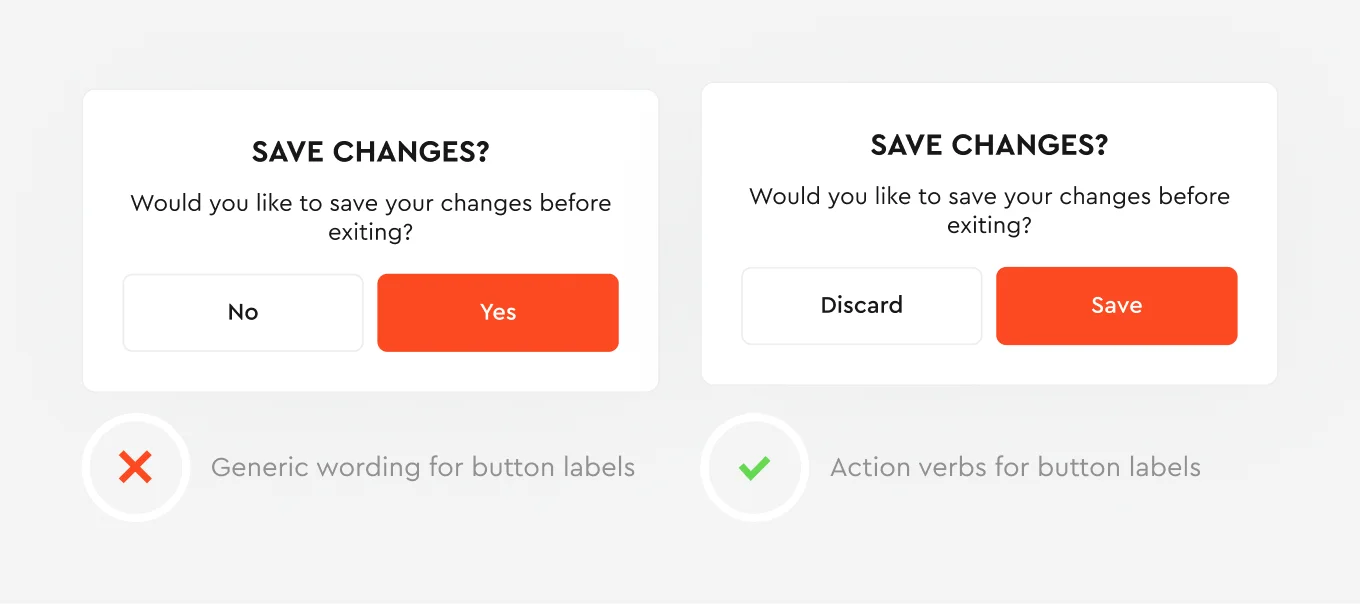What is Ux writing and how to do it right?
By Spaceberry Studio 4 min reading Aug 28, 2025

User experience (UX) writing holds one of the critical roles in shaping how users interact with a product or service. UX writers create all text that appears throughout a digital product or service ( buttons, errors, hints, tooltips, navigation, etc) Even though copywriting and UX writing might seem similar, in reality, they serve different roles. While copywriting is sales-oriented and aims to attract customers, UX writing focuses on clarity, consistency, and empathy, taking into account the user’s perspective and understanding their needs, goals, and pain points. It aims to streamline the user’s journey and minimize confusion and frustration. In this article, we want to share the most common mistakes that you can avoid in your future product and enhance user experience.
Avoid using jargon
Before using professional terminology make sure to understand who your audience is and what background they have. For users unfamiliar with technical jargon, complicated instructions might be confusing and intimidating. One of the most important tasks that UX writing has is to guide users through their journey the easiest way possible. Not understandable jargon doesn’t give any clues on how to resolve the issue and as a result, becomes completely unnecessary. Instead, try to simplify the message as much as possible to give straightforward instructions.

Use clear calls to action
Calls to action are one of the key elements of any system that shape the user experience the way it was intended. CTAs have quite a lot of guidelines that are recommended to follow, but almost all of them can be combined into three main rules:
- Be consistent: maintain consistency in tone, terminology, and messaging across all pages and platforms to build familiarity and trust with users.
- Guide through actions: make sure your CTAs are specific and tell user exactly what to do. Try using verbs that describe specific actions instead of simple “Yes”, “Okay”, “No” and so on.
- Help avoid mistakes: be considerate of ambiguity that similar CTAs might have. Avoid similar words and give straightforward instructions on what can be done next. For example instead of saying “Sign up or Sign in” use “Create account or Log in”.
Vague CTA makes content ineffective and frustrating which can noticeably lower users’ engagement.

Don’t use robotic language
People like and believe in humanity, so in order to make your service user-friendly, it is important to insert some life into it. First and foremost, write in an active voice, passive voice is usually used in scientific articles or very serious instructions.
When it is appropriate, use conversational language and address directly to the user. One more tip is to use a bit of pronounces such as We or You. It gives a feeling of personal communication and not just AI-generated text. Also, try to address users’ concerns and emotions with compassionate and reassuring language.

Explain
Don’t leave your user without understanding what’s going on and what comes next. Be sure to explain why you are asking for any kind of data and how it will be used. Give an understanding of what step comes next. If you see any complicated terminology or flow that requires some additional context and knowledge, don’t hesitate to provide a hint with an explanation.

Mind your language
Last but not least are grammar and spelling. Good grammar is a basic factor that affects the credibility and trustworthiness of the platform. Poor grammar can create frustration, irritation, and suspicion among your users. That’s why it is critically important to proofread your work and double-check it. To make your life easier, you can find lots of proofreading resources online.

Conclusion
UX writing is a crucial part of any digital product and should never be underestimated by digital creators. The power of good UX writing lies in its ability to go unnoticed as it makes the experience easy and doesn’t cause confusion. That’s why it is important to level up your skill in UX writing to make sure your products are not only visually attractive but also easy to use.
As many devices and browsers exist, testing the design on as many platforms as possible is crucial. It helps identify and correct any issues before they affect users. Consider using both emulators and real devices for testing.


